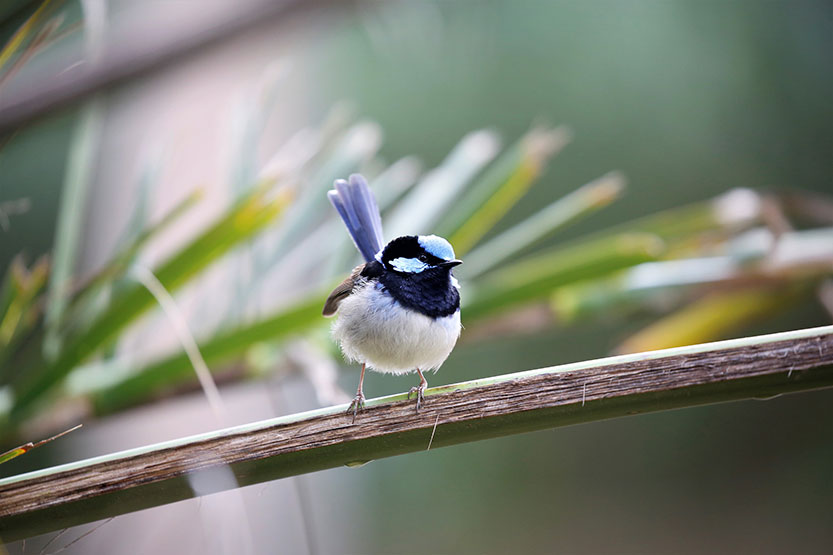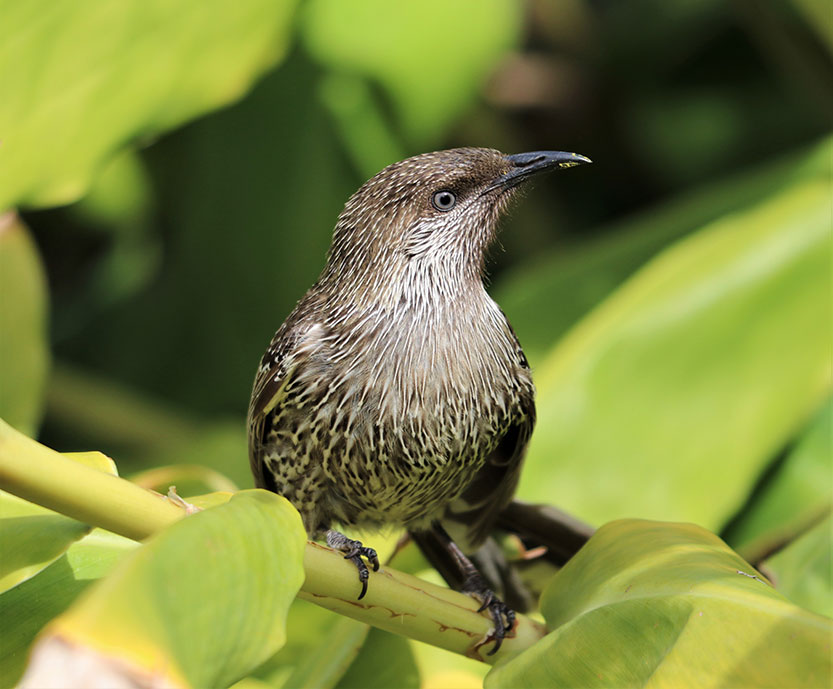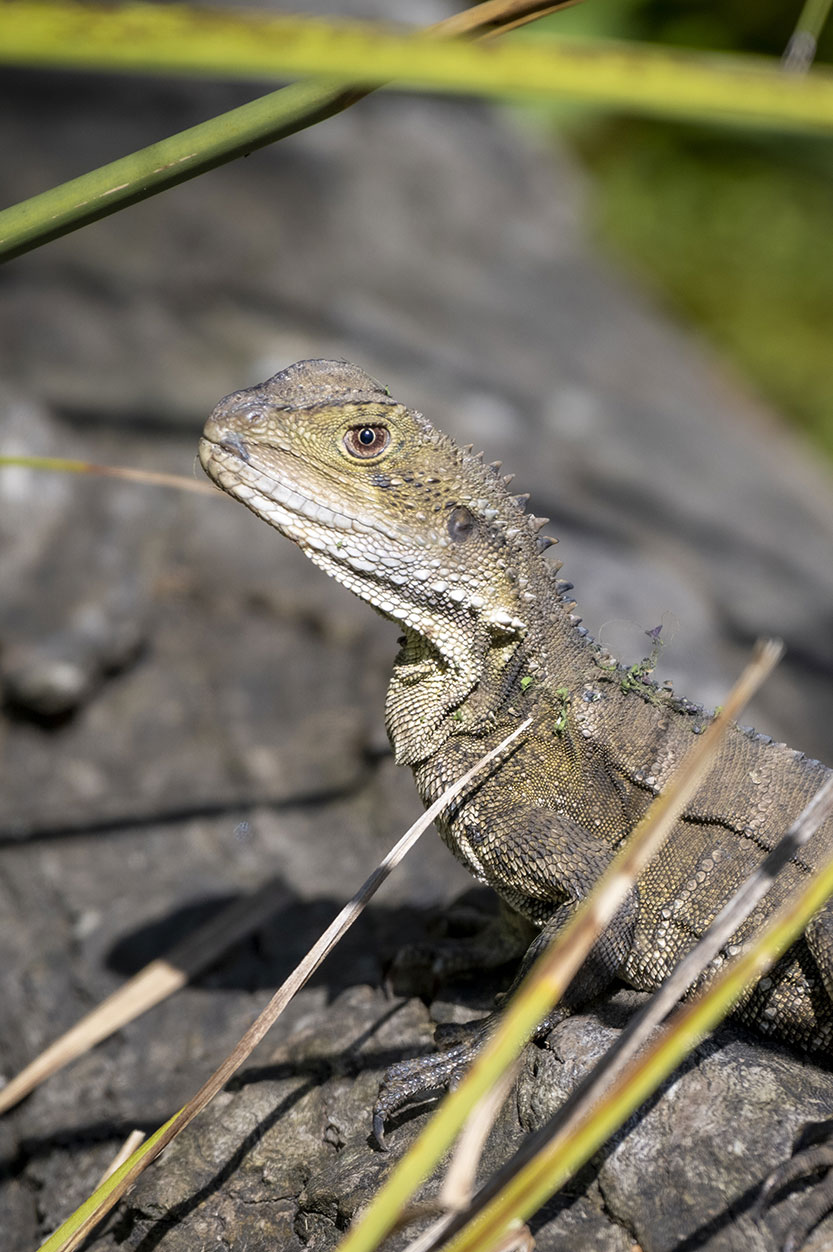The wonder of wildlife
I’ve been thinking a lot about habitat lately. Maybe it’s because we’re all spending so much more time at home. A habitat is home, a home for wildlife.
There’s habitat all around us: in the local park, along our street, in our backyard. Even a balcony or windowsill can be habitat for something!
I’m lucky enough to work in one of central Melbourne’s biggest and most diverse habitats – Melbourne Zoo. Most people know the zoo is home to lions, giraffes, zebras and meerkats, but you may not know the zoo is also home to a huge variety of wild animals during the year.
Our trees, ponds and gardens provide food, water and shelter – in short, habitat. In fact, the zoo grounds are a collection of different habitats, perfect for an array of local birds, reptiles, mammals and invertebrates.
I realised very soon after joining the zoo that it’s a real sanctuary in the city. It’s a refuge for so many animals, as well as people when they visit. The variety of wildlife that visits the zoo or makes a home here is amazing.
The zoo is brilliant for bird lovers. Rainbow Lorikeets, Wattlebirds, Bellbirds, Ducks and Wrens are all easily spotted, and there are also the more occasional winged visitors like Tawny Frogmouths, Pardalotes and the Yellow-tailed Black Cockatoos who drop in when some of our trees are producing their favourite seeds.
There are many local butterflies and all sorts of other invertebrates and some amazing water dragons and turtles who live at ponds and lakes in different parts of the zoo. And that’s just to name a few. I know that many of our Zoos Victoria Members and visitors love these wild residents and visitors as much as they do the more famous zoo animals.
We love and care for these wild animals also. My team of horticulturalists and sustainability experts thinks about them when we’re creating gardens, planting, pruning, mulching, and composting. We consider them when managing water quality and irrigation across the zoo and when we design and look after buildings and infrastructure. As nature enthusiasts we understand how important the zoo is as a refuge and playground, not just for our zoo members and the people of Melbourne, but for the animals of Melbourne.
We love this wildlife but coexisting with it can be challenging at times. We need to discourage possums from exploring places where they could get injured. So, we have bin latches on our bins to stop possums getting into them at night. And we block off and regularly inspect our roof spaces to ensure possums can’t get into buildings. Birds nesting in high numbers can also damage some of our trees. In this area, as in everything at the zoo, animal welfare is at the core our decision making.
The opportunity we have to create habitat brings with it a responsibility to manage that habitat carefully in the best interests of the animals who visit or live in it. Wildlife-safe netting on backyard fruit trees is something that might be relevant to you in your backyard or your local community garden.
We can all help to create habitat where we live. There are little things you can do to attract wildlife into your own local environment, and to care for them when they arrive. Maybe it’s planting some flowers for the bees and butterflies, or trees or shrubs for birds, or making a small pond for frogs. Think about what sort of animals you want to attract or make a home for and research what they love and need. It’s fun!
It’s so important from a mental health perspective to have that connection to nature in our everyday life, especially when we’re spending so much more time at home. If you just sit quietly somewhere outside at your home or in your local area, nature comes out from everywhere. When you just pause and listen and watch, the birds get closer, and the bees and butterflies appear. If you’re lucky a lizard might poke its head out. Just animals doing their thing – foraging, feeding, exploring. Nature is all around us, but sometimes we need to be still to discover it. Animals bring so much joy. I love to observe that hive of activity.
As an animal lover, I’m so aware that the space wild animals need to thrive is diminishing across the world. It’s partly what brought me to the zoo. I’m passionate about the zoo’s mission of fighting extinction and creating special places for wildlife and people who love wildlife. This is my chance to make a contribution to that bigger picture. It’s what keeps me optimistic.
I believe we all have a role to play in creating a beautiful global sanctuary for wildlife. For me it starts at my place and at Melbourne Zoo. And I am certain that you can make a big contribution where you live, also •

The Movement Refinery: 20 years and still going strong






 Download the Latest Edition
Download the Latest Edition